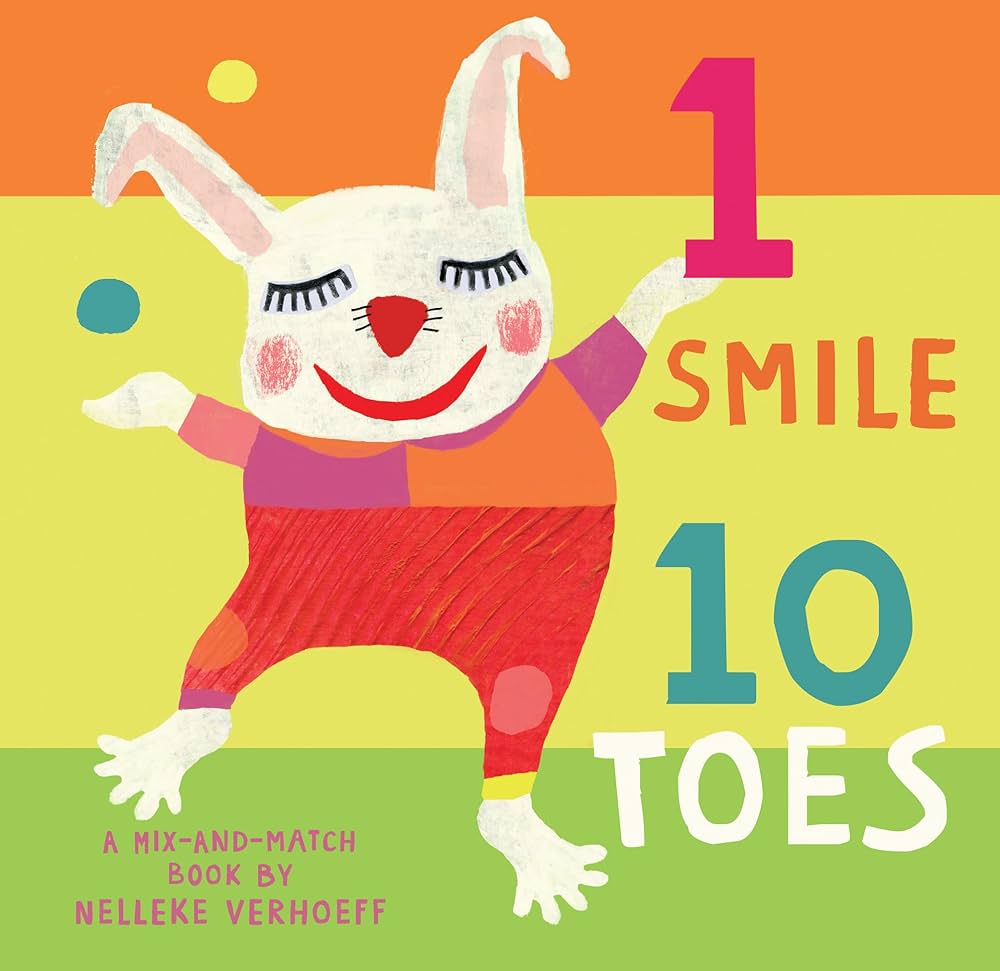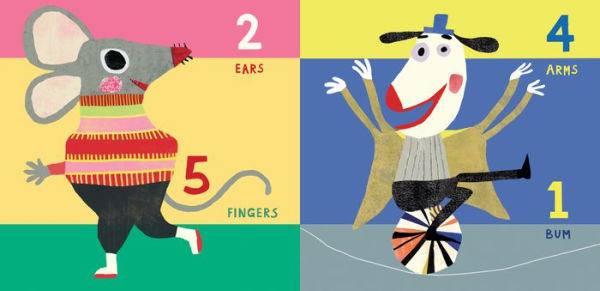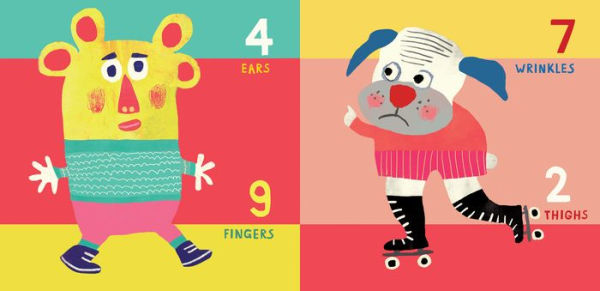
Inclusive Children's Book Teaching Guide
1 Smile 10 Toes: A Mix-and-Match Book
What is this book about?
This unique split-page book invites young readers to match heads to a variety of tails and legs to compose quirky characters.
Each flap presents new opportunities for young children to practice counting while learning vocabulary words for body parts such as hair, teeth, toes, feathers, and more.
The animal characters in the book also carry and play with many different kinds of objects. As children combine the different page flaps to create a diverse array of characters, they learn that anyone can wear, carry or play with anything they want.
Who is depicted in this book?
- Animal characters who transcend gender stereotypes
What early childhood themes and concepts does this book explore?
- Counting body parts up to 10
- Actions such as point, skate, wave, and strike a pose
- Vocabulary words for body parts, clothing items and features such as feathers, curls, nostrils, and pigtails
How does this book support anti-bias education?
This mix-and-match book encourages children to move beyond gender stereotypes as they create different animal combinations. The animals are not gendered in any way, but other features (such as the colors, clothes and accessories they wear) are often gendered.
With relatable concepts and colorful illustrations, 1 Smile, 10 Toes celebrates diversity and sends the message that children are free to dress as they please and choose any toy or activity that makes them happy.
Depending on how the book is shared or used—and the developmental level of the children—1 Smile 10 Toes: A Mix-and-Match Book may be used to support the following core goal from Anti-Bias Education for Young Children and Ourselves:
Diversity—Teachers will promote each child’s comfortable, empathetic interaction with people from diverse backgrounds so that children will express comfort and joy with human diversity, use accurate language for human differences, and form deep, caring connections across all dimensions of human diversity.
How can this book be used to meet early childhood learning standards?
For all ages
Use 1 Smile 10 Toes: A Mix-and-Match Book to meet early childhood literacy standards
For children from birth to age three
Teaching suggestion: Point out the animals, actions and body parts and respond to the children as they react to, point at, or name them.
What Illinois Early Learning Guideline does this meet for children from birth to age three?
Developmental DomainLanguage Development, Communication and Literacy
Standard: Early LiteracyChildren demonstrate interest in and comprehension of printed materials.
Indicators for children:
- Shows awareness of printed materials, e.g., stares at a picture in a book (Birth–9 months)
- Points to pictures in a book and reacts, e.g., smiles when sees a picture of a dog (7–18 months)
- Points to familiar pictures and actions in books (16–24 months)
Teaching suggestion: Model counting the depicted body parts with one-to-one correspondence as you explore the pages together.
What Illinois Early Learning Guideline does this meet for children from birth to age three?
Developmental DomainCognitive Development
Standard: Quantity and NumbersChildren demonstrate awareness of quantity, counting and numeric competencies.
Indicators for children:
- Imitates counting, e.g., climbs stairs and mimics “one, two” (7–18 months)
- Communicates amount of familiar objects, e.g., sees two apples and says, “two” (16 –24 months)
- Uses nonverbal gestures to demonstrate understanding of quantities, e.g., holds up two fingers to express two of something (16–24 months)
- Begins to use “one,” “two,” and “three” to identify very small quantities without counting them (16–24 months)
- Begins to count objects; may count objects twice and/or skip numbers (21–36 months)
For preschoolers (ages three to five)
Teaching suggestion: Encourage the children to explore many different combinations of body types and dress. As you do so together, use they/them pronouns and reinforce the idea that we do not know the characters’ genders.
What Illinois Early Learning and Development Standards does this meet for preschoolers?
Social Studies Standard18AExplore people, their similarities and their differences.
Benchmark 18.A.ECa:
Recognize similarities and differences in people.
Teaching suggestion: Model counting the depicted body parts as you explore the pages together.
What Illinois Early Learning and Development Standards does this meet for preschoolers?
Mathematics Standard6ADemonstrate beginning understanding of numbers, number names and numerals.
Benchmark 6.A.ECa:
Count with understanding and recognize “how many” in small sets up to 5.
Benchmark 6.A.ECb:
Use subitizing (the rapid and accurate judgment of how many items there are without counting) to identify the number of objects in sets of 4 or less.
Benchmark 6.A.ECe:
Differentiate numerals from letters and recognize some single‐digit written numerals.
Benchmark 6.A.ECf:
Verbally recite numbers from 1 to 10.
See inside this book.


